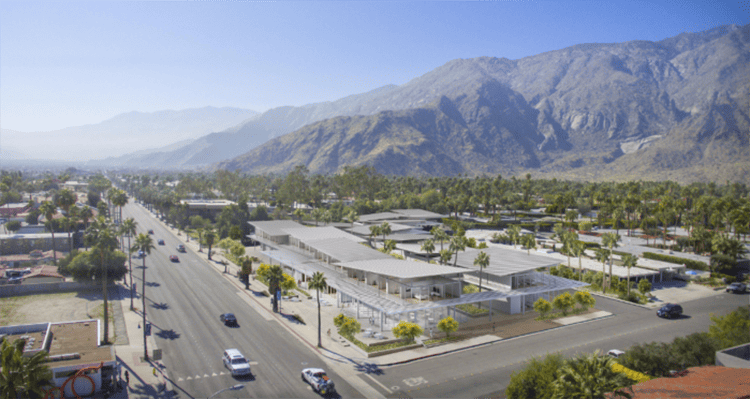Conferences such as Housing California offer housers the opportunity to pull back from being in the weeds of our daily number crunching. This is the time to get together and share best practices on how to forge synergistic partnerships and brainstorm ways to best harness the power of our lending tools that make impactful deals possible. The 2024 Housing California Conference theme, “Celebrating Success, Shaping the Future,” resonates with our organization as we commemorate 40 years of a strong track record producing and preserving affordable housing in California – and a future of institutionalizing racial equity in our lending.
LIIF’s History
Recognizing the need for quality, affordable housing in historically excluded communities, our organization started in 1984 as the Low Income Housing Fund. While we eventually broadened our community development financial institution (CDFI) priorities, housing remains the foundation of our work. Today, we are proud of the fact that the Low Income Investment Fund (LIIF) has become one of the nation’s largest CDFIs, with a banner year recording $292 million in loans closed in FY23 (July 1, 2022-June 30, 2023). Of that total, 77% was earmarked to affordable housing in under-resourced communities across the land.
LIIF has a storied history of investing in California affordable housing. We have created impact statewide, from Crescent City down to San Diego, Pacific coastal cities to Sierra Nevada mountain towns. While these areas each showcase unique needs, two things remain constant.
First, they say it takes a village, which is why our work in communities often relies on collaboration via private-public partnerships. LIIF leverages philanthropic resources to offer below-market-rate pricing and flexible capital for investments into historically excluded communities. In partnership with our affiliate National Affordable Housing Trust (NAHT), which is a nonprofit Low-Income Housing Tax Credit (LIHTC) syndicator, we are cultivating investor relationships specifically designed to increase access to capital for developers of color.
Second, we look to optimize deals tailored to these diverse locales and developers.
Racial Equity in Lending
We design our products and programs to not only address capital needs, but also to shift the underlying mindsets that uphold institutional racism. LIIF’s Impact-Risk-Profitability (IRP) Framework seeks to ensure we use our capital for fostering power and agency in communities of color. The IRP framework will over time help LIIF make decisions to drive the most flexible favorable capital to the projects and practitioners making the most progress on racial equity. The IRP incorporates three tools:
- Impact Scorecard. Assesses expected impact and racial equity outcomes.
- Risk-Rating Model. Expected risk of repayment.
- Profitability Model. Financial return.
The IRP launched in January 2023, establishing common impact language in loan approvals, and collecting current and historic data. LIIF anticipates launching the next phase in July 2024 to incorporate the IRP in lending decision-making, using impact thresholds to inform risk and profit parameters.
LIIF’s Solutions
There are daily stories describing the challenges endemic to housing affordability in California. Median home prices teetering around $1 million in major urban centers. Renters being burdened with over 50%+ of their household income going toward shelter. Systemic obstacles to quickly producing or preserving affordable housing that is so desperately needed.
The stark reality: According to nonprofit, non-partisan think tank Public Policy Institute of California, the state is facing a jaw-dropping 3.5 million-unit housing deficit for the current population.
Despite such challenges, at LIIF we look to counter the narrative that the situation is futile. Being a solutions-based organization, rather than having a knee-jerk reaction of, “We can’t do that,” we prefer to ask ourselves, “How can we do that?”
Collective impact is key. Our statewide partnerships run the gamut from the California Department of Housing and Community Development (HCD) and mission-aligned foundations to regional agencies and fellow CDFIs. For example, we partner with Lift to Rise (LTR) and the cross-sector Collaborative Action Network (CAN) in the Coachella Valley. Rooted in the Center for Community Investment’s Capital Absorption Framework, LTR and CAN partners have aggregated a regional affordable housing development pipeline that has surpassed 7,000 units.
LIIF is uniquely positioned to respond in real time to fluctuating market conditions. That means creating new products to help meet market needs. Expanding or adjusting national funds. Harnessing the power of the LIHTC Development Fee Bridge Initiative, which helped stuck projects move forward during the pandemic and even afterward.
Allow us to highlight several examples of the many ways we invest in California affordable housing.
- We Lift: The Coachella Valley’s Housing Catalyst Fund. LIIF serves as fund manager for this cross-sector, collective impact fund. Since this is a place-based initiative, our staff member Kenny Rodgers is strategically positioned in the Valley with the LTR team. LIIF underwrites and issues the loans, plus provides technical assistance. LTR participates in the LIIF loan helping to create an overall lower cost of funds for the borrowers. The fund has a goal of creating 10,000 affordable housing units by 2028, with a focus on the Latinx workers who are the backbone of the region’s economy yet struggle to be able to afford the region’s ever-increasing rents. The production of affordable housing is now at more than 1,000 units per year compared to fewer than 50 prior.
Partners: Lift to Rise; Rural Community Assistance Corporation (RCAC); and 70 community partners. - Black Developer Capital Initiative (BDCI). Launched in 2021, the BDCI comprises two products: the Line of Credit offered through LIIF, which provides early-stage project financing at a favorable interest rate; and the LIHTC Equity Fund offered through NAHT. The two products total $115 million, and BDCI supports developers of color who have been historically denied access to capital at traditional lenders. BDCI recently expanded into LIIF’s Western region, with more than half of the national fund’s $6 million in Lines of Credit allocated to this specific territory already disbursed.
Partners: Arnold Ventures; Bank of America; Capital One; Goldman Sachs; MacKenzie Scott; and Wells Fargo. - Golden State Acquisition Fund (GSAF). The numbers tell the story of impact of GSAF: 10 years; 100 developers; 10,000 affordable units. LIIF serves as administrative agent, fund manager and originator. After an initial state investment of $23 million, the revolving fund is now at $292 million (video.)
Partners: A collaborative of eight CDFIs working alongside HCD.
California Project Spotlights

Aloe Palm Canyon, Palm Springs, Calif.
- TODCO Group, San Francisco. A recent Racial Equity Stand-Out (RESO) deal in California was our $12 million construction bridge loan with TODCO Group to support the rehabilitation of The Knox, a 140-unit, single-room-occupancy (SRO) apartment building in San Francisco’s South of Market (SoMa) neighborhood. The LIIF loan provides capital for critical repairs to ensure that the existing affordable housing stock meets safety and high-quality standards as the units age.
Funding partners: San Francisco Mayor’s Office of Housing and Community Development (MOHCD); and HCD (Portfolio Reinvestment Program). - West Hollywood Community Housing Corporation, Palm Springs. As part of the We Lift: Coachella Valley’s Housing Catalyst Fund initiative (see “California Funds/Programs” above), in 2023 LIIF provided a construction loan to the West Hollywood Community Housing Corporation for 71-unit Aloe Palm Canyon Apartments, a Palm Springs affordable housing development for low-income residents ages 62 and up. The project will decrease the rent burden in a community where 50% of the population identifies as Latinx, restricting 25 of the 71 units for seniors who were formerly experiencing being unhoused. For this funding, LTR participated with $5 million and LIIF has $5 million on-balance from our revolving loan fund.
Funding partners: LTR; City of Palm Springs; and Riverside County. - Novin Development Corporation, Soquel. LIIF closed a seven-year, $7.59 million affordable housing construction-to-permanent loan to BIPOC-led developer Novin Development Corporation. Loan proceeds will be used for the construction of a 36-unit modular project — LIIF’s initial such loan — for Santa Cruz County households experiencing or vulnerable to being unhoused. There will be 16 units reserved for veterans, 15 for youth and four for families with minor children.
Funding partners: HCD (Project Homekey); and Santa Cruz County. - American Family Housing, Garden Grove. LIIF closed one acquisition and one predevelopment loan to American Family Housing for a combined $2.85 million, with 25% financed from GSAF. The Goldenwest Apartments, located in Orange County, will create new affordable housing options in a region with limited affordability. In addition to providing permanent affordable housing, the developer will support residents by offering life skills plus health and wellness workshops.
Conclusion
Once back at our desks – and armed with new information garnered at the Housing California conference – LIIF‘s Western Region Lending team will continue to look for the best ways to collectively scale our work statewide. Such impact would not be possible without all of you, whether you are a funder, a partner, a fellow CDFI or you work for a government agency.
Together, we can devise and implement even more solutions to address the housing crisis in California. Now is our time.
________________________________________________________
Are you a California developer in need of financing?
Visit us at the Housing California Conference, Booth 45.
Or contact westcomm@liifund.org.
